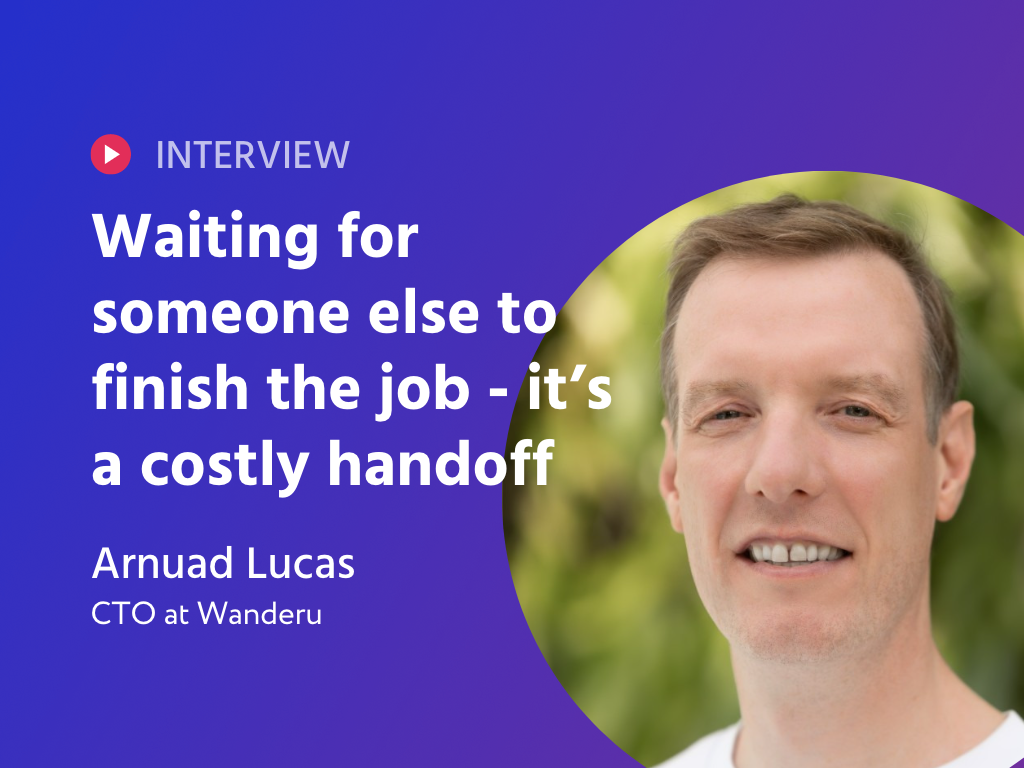In this insightful interview, we sit down with Adam Pearce, Co-Founder of Blend Commerce, a leading Conversion Rate Optimization (CRO) agency specializing in e-commerce growth. Adam shares his journey from an early career in education app development to co-founding Blend Commerce, which now helps brands optimize their online presence and sales.
With a unique blend of marketing and development, Adam and his team focus on driving customer action—whether that’s purchasing, upselling, or encouraging repeat buys. Adam discusses the key factors that drive success for e-commerce businesses and the importance of data-backed decisions over gut feelings. He also dives into the significance of networking and how the creation of the Ecom Club has facilitated meaningful connections within the industry.
Through their specialized CRO insights, Blend Commerce emphasizes the need for businesses to understand their data before implementing changes. Adam’s passion for helping brands succeed shines through as he discusses the importance of targeted, measurable strategies in driving business growth.
How Adam Pearce and Blend Commerce Turn E-commerce Wish Lists into Data-Driven Success
When Adam Pearce co-founded Blend Commerce, he and his team weren’t just building another e-commerce agency. They were diving headfirst into a world where data, not guesswork, would shape every decision. “We try to get customers to buy now, buy more, or buy again,” Adam says simply, defining the core of what his agency does. But the journey to get there hasn’t been a straight line. Adam, now in his fourth or fifth career, admits that he once thought e-commerce was a passing trend—until his brother-in-law proved him wrong. Their partnership, founded on the unlikely mix of marketing and development, became the backbone of Blend Commerce, and today, the agency helps brands optimize their online stores by transforming wishful thinking into actionable insights.
We try to get customers to buy now, buy more, or buy again
One of the first things Adam and his team do when a new brand comes knocking is ensuring they actually need help. It’s not just about taking on any client—it’s about ensuring that their business can benefit from the strategies that Blend Commerce excels at. “We don’t want to waste anyone’s time,” Adam explains. “If a brand doesn’t have enough traffic, we’re not going to dive in and change everything. It’s about data-backed decisions.” With a minimum of 50,000 visitors a month, Blend Commerce can dig into the analytics, heatmaps, and other data to understand how customers interact with the site. From there, they build a roadmap—guided by facts, not opinions—to improve conversion rates and drive sales.
What really sets Blend Commerce apart is their ability to sift through the noise—particularly the wish lists clients often present. Many founders want flashy features or changes simply because they “look cool,” but without the data to back it up, those ideas can be a waste of resources. “You can’t just throw money into a fire pit,” Adam says. Instead, his team uses data to either validate or challenge those ideas, ensuring that every change made is grounded in real customer behavior. It’s a no-nonsense approach that ensures Blend Commerce doesn’t just follow trends but sets them, making e-commerce websites smarter, more efficient, and ultimately, more profitable.
Why Adam Pearce Believes Small Tweaks, Not Flashy Designs, Drive E-Commerce Success
When it comes to evaluating the health of an e-commerce store, Adam Pearce, co-founder of Blend Commerce, knows that conversion rate isn’t the be-all and end-all. Sure, it’s important, but it’s only one piece of the puzzle. “Conversion rate is just one lever,” Adam says. "There’s also average order value, return customer rate, and purchase frequency—each one plays a role in profitability." In other words, driving a sale is just the beginning; the key is understanding how to get customers to spend more, return often, and make bigger purchases. For example, when working with a vitamin store, Adam’s team realized that while the conversion rate was solid, the average order value was slipping. The solution? Tweaking the site’s design and introducing better product bundling and upselling strategies to get customers to spend more.
Conversion rate is just one lever
However, it’s not all about flashy design updates or big, bold changes. As Adam points out, sometimes the most significant improvements come from making small, simple tweaks. One example he shares is adding payment options, like PayPal, directly on the cart page, before customers even reach checkout. “It’s a basic thing, but it works,” he says. “It increases conversions by 20 to 30%.” The reason? It puts customers at ease, giving them the assurance that they’ll be able to pay in the way they prefer. This is a prime example of how small adjustments, often overlooked, can have a massive impact on the customer experience and the bottom line.
But not every test yields success. Adam acknowledges that testing is a process of trial and error. One test with a clothing company revealed that while adding information like product care and materials on the product page seemed like a good idea, it actually led to a drop in conversion rate. "You want about seven out of ten tests to work,” he says. "When something fails, it’s a learning opportunity. You’re eliminating ideas, and that’s a win in itself.” Through AB testing, Adam and his team are constantly fine-tuning strategies, sometimes making small but impactful adjustments that drastically improve sales. It’s a journey of constant learning, testing, and refining—one small tweak at a time.
Adam Pearce on Tailoring CRO for Every Stage of Growth: From Startups to Enterprises
As e-commerce brands grow, so does the complexity of their conversion rate optimization (CRO) strategies. Adam Pearce, co-founder of Blend Commerce, emphasizes that CRO isn’t a one-size-fits-all approach. “It’s about matching your strategy to the speed you’re moving at,” he says. For smaller brands with fewer than 50,000 monthly visitors, it’s all about gathering insights from customer reviews and feedback. These early-stage brands can still optimize their site based on qualitative data, like net promoter scores or customer surveys, before diving into more sophisticated methods like heat mapping and A/B testing. As traffic increases, however, CRO becomes more data-driven. With larger brands, tools like Microsoft Clarity help analyze user behavior, and A/B tests can run faster, allowing for more granular tweaks to drive profitability.
It’s about matching your strategy to the speed you’re moving at
Once brands hit a certain scale, Adam points out that personalization becomes a game-changer. It’s not about just adding a customer’s name to an email. Real personalization means showing products based on a user’s past behavior and preferences. Think Amazon, where every product recommendation feels tailored to your interests. Adam encourages brands to think micro, not macro. “Smaller cohorts can yield bigger gains,” he says. By segmenting customers and running targeted A/B tests, brands can increase both conversion rates and average order value (AOV), which directly impacts the bottom line. The key is in using zero-party data—like on-site quizzes or surveys—to better understand customer preferences and deliver a more customized shopping experience.
But as brands expand into new markets, Adam warns against the “rinse and repeat” mentality. “Just because something works in the UK doesn’t mean it’ll work in the US or Italy,” he explains. A perfect example is the water brand Liquid Death, which tried to launch in the UK with the same strategy that worked in the US, only to find that the market wasn’t ready for tall cans of water. Similarly, for brands with subscription models, Adam suggests considering how consumption habits vary by region. Whether it’s food, vitamins, or pet supplies, the frequency of consumption can differ greatly, and understanding these nuances is crucial. Tailoring your product offering and delivery methods to local preferences can make or break your success in new markets.
Adam Pearce’s Secrets to Gaining Stakeholder Buy-In and Making Smart CRO Moves
When it comes to implementing Conversion Rate Optimization (CRO) in an existing e-commerce operation, Adam Pearce knows that getting buy-in from stakeholders is often a challenge. “I wish they were all in,” Adam laughs, referring to how some teams can be hesitant to embrace CRO changes. While e-commerce managers or directors may be on board, others, like operations or SEO teams, often have concerns. The reason? CRO affects multiple areas of the business. For example, increasing conversion rates means higher volumes of sales, which in turn leads to more operational strain. Adam emphasizes the need to handle these discussions carefully, showing how a small improvement in conversion rates can lead to significant benefits across different departments, from paid ads to SEO to operations.
I wish they were all in
One crucial factor Adam highlights when making CRO work in a real-world setting is the careful consideration of mobile commerce. With the majority of traffic now coming from mobile devices, it’s essential to approach mobile optimization differently. For example, adding a visible search bar on mobile devices—a simple change—can increase the rate of mobile search by 20%. This tweak doesn’t just improve the user experience; it leads to a significant jump in conversion rates and average order value (AOV). Adam believes that small, mobile-specific changes can have a big impact on the bottom line, and brands need to adapt their strategies for the growing mobile audience.
Looking ahead, Adam is particularly excited about the potential of AI in e-commerce. He predicts that tools like ChatGPT will soon become key players in the shopping experience, helping shoppers find products more easily through personalized recommendations. But as Adam points out, the quality of product information on websites will be more important than ever. “The companies that optimize their product pages for AI will be the ones that get noticed,” he says. As the e-commerce landscape shifts, it’s clear that embracing new technologies and making thoughtful, data-driven changes will be critical for brands that want to stay ahead of the curve.




